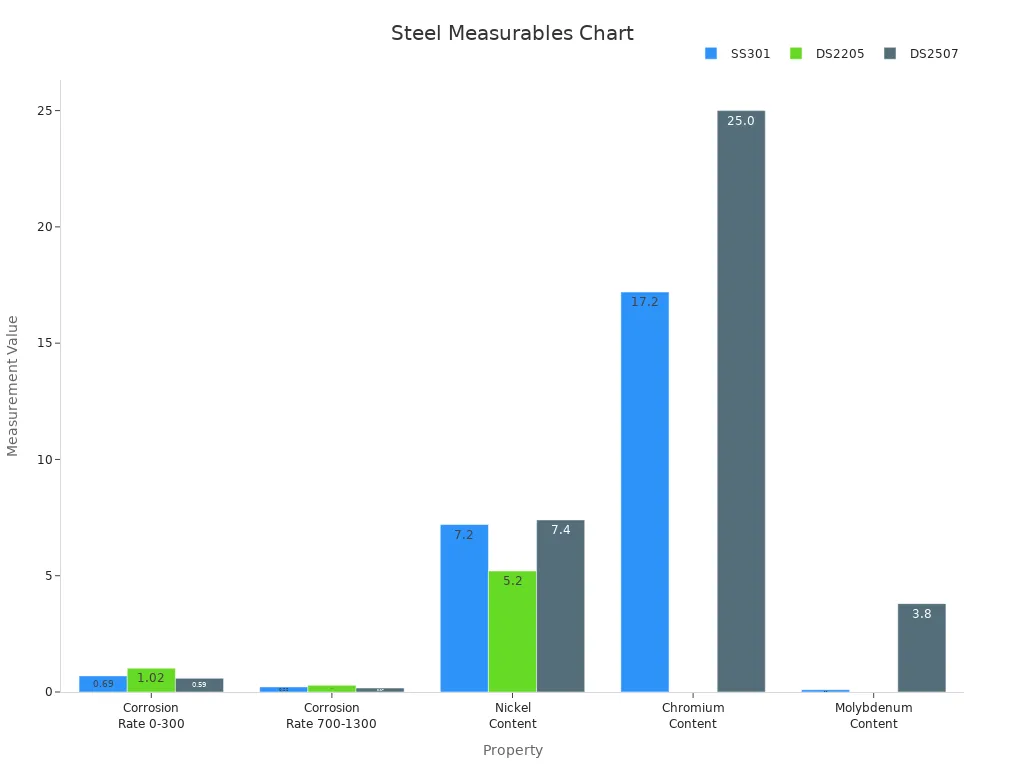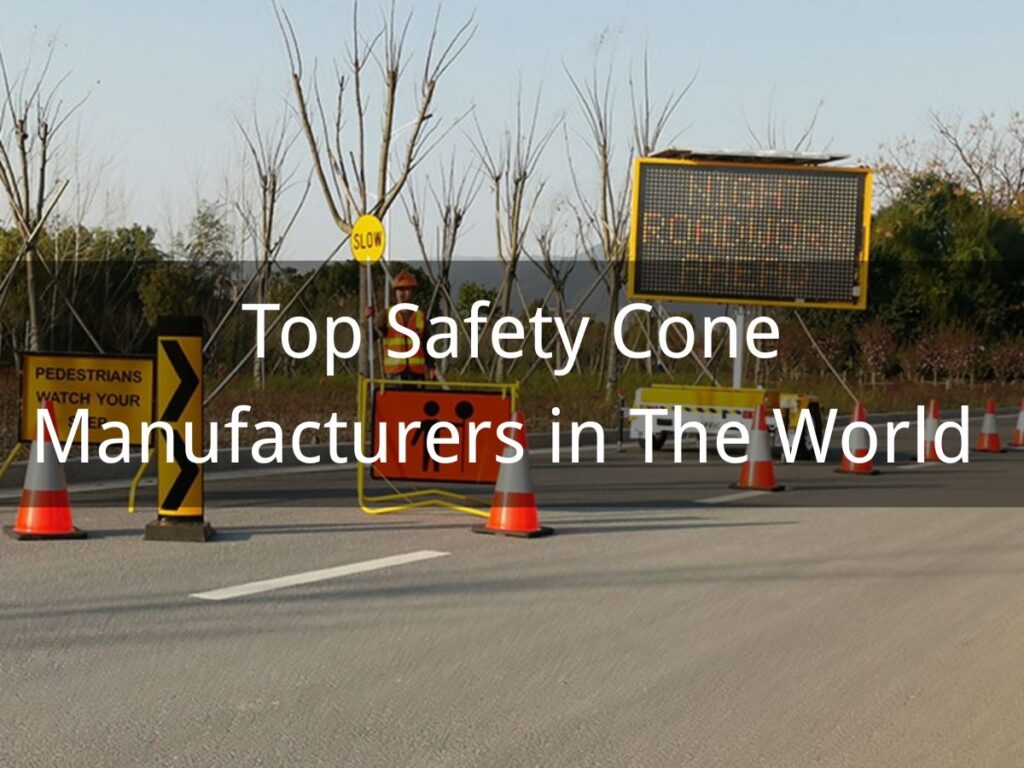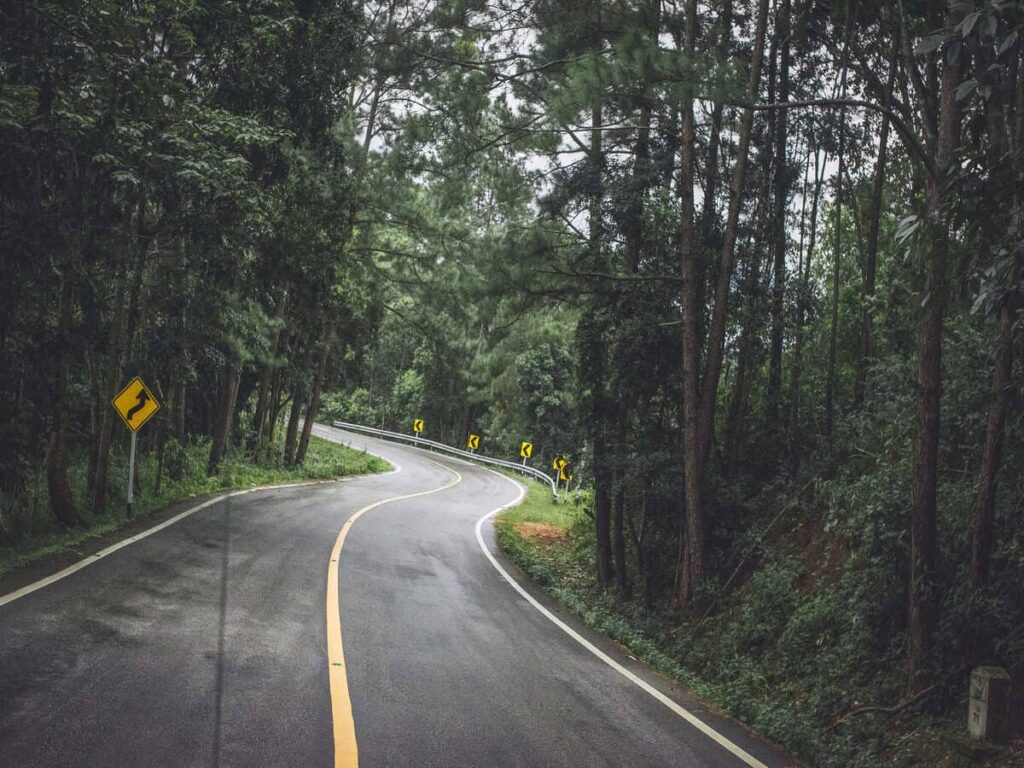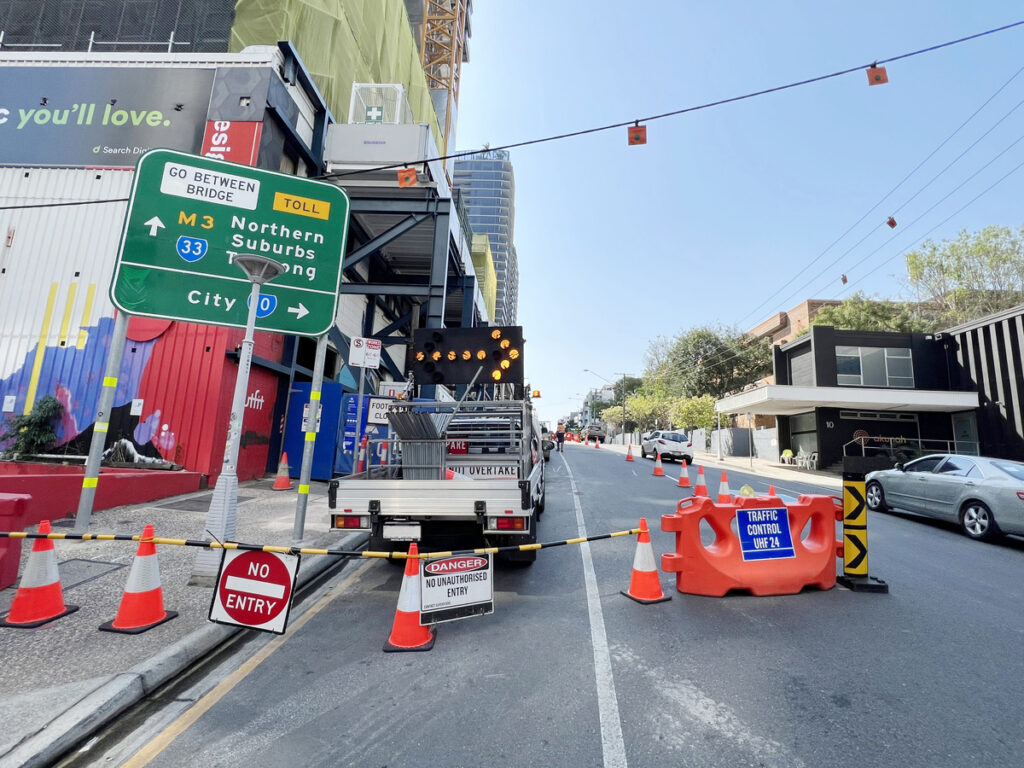
Coastal environments demand corrosion resistance for bollards. Stainless steel bollards work best near saltwater, while inland projects can use concrete bollards or even cast iron mooring chocks. Steel bollards for sale offer security for both locations. Cast steel mooring chocks and cast iron mooring chocks provide strength for heavy-duty needs. Cast iron mooring chocks also resist impact and wear.
Looking for the right Bollards de la circulation for your site? Explore OPTRAFFIC’s full range of traffic safety solutions and get expert advice for your next project.
Principaux à retenir
- Coastal areas need corrosion-resistant bollards like stainless steel or cast steel mooring chocks to withstand saltwater and humidity.
- Inland bollards face less salt corrosion but still require protective coatings and regular maintenance to handle rain, pollution, et les changements de température.
- Stainless steel bollards offer long-lasting strength and low upkeep, making them ideal for harsh environments despite higher upfront costs.
- Protective coatings such as galvanization and powder coating extend bollard life by blocking moisture and chemicals.
- Regular inspection and cleaning help prevent corrosion and damage, ensuring bollards stay safe and durable over time.
Corrosion and Bollards
What Is Corrosion
Corrosion is a natural process that changes metal into a weaker form. When steel reacts with oxygen and moisture, it forms rust. This reaction happens faster in places with saltwater or high humidity. Corrosion can damage metal objects over time, making them less strong and less safe.
Several measurable factors help experts understand how corrosion affects steel. The table below shows some of these factors and how they are measured:
| Measurable Factor | Description | Measurement Principle / Méthodologie |
|---|---|---|
| Corrosion Potential (Ecorr) | Shows the potential difference between steel and a reference electrode; signals corrosion risk | Electrochemical measurement of potential difference; indicates corrosion tendency |
| Corrosion Rate | Tells how fast corrosion happens | Weight loss on corrosion coupons or linear polarization resistance (LPR) |
| Polarization Resistance | Inversely related to corrosion rate; higher resistance means slower corrosion | LPR method measuring current response to small voltage changes |
| Electrochemical Noise | Measures random changes in potential and current | Analysis of potential and current fluctuations at the metal-electrolyte interface |
| Electrical Resistance Probes | Tracks metal loss by changes in electrical resistance | Measures resistance changes as metal thins; needs temperature compensation |
| Corrosion Coupons | Uses sample pieces of metal to measure weight loss | Coupons weighed before and after exposure to calculate corrosion rate |
Corrosion potential (Ecorr) gives a quick idea of corrosion risk. A more positive Ecorr means the steel surface is better protected. A negative shift shows more corrosion activity. Ecorr does not show how fast corrosion happens, but it helps experts decide if more tests are needed.
Effects on Steel Bollards
Corrosion weakens steel bollards by eating away at the metal. Au fil du temps, rust can make bollards lose their shape and strength. Dans les zones côtières, salt speeds up this process. Inland locations may see slower corrosion, but rain and pollution can still cause damage. When corrosion attacks bollards, they may not protect people or property as well. Regular checks and the right materials help keep bollards strong and safe for years.
Facteurs environnementaux
Coastal Conditions
Coastal conditions create a tough environment for metal objects. Salt-laden air from the ocean carries tiny salt particles that settle on surfaces. When these particles mix with moisture, they form a corrosive solution. High humidity in coastal areas speeds up this process. Salt spray can reach up to 23 mg/m³, and humidity often stays between 70% et 90%. These conditions make corrosion happen faster. Buildings and structures near the shore collect more salt, especially if they are higher up or closer to the water. Wind patterns also move salt further inland. Because of these factors, bollards in coastal areas face a much higher risk of rust and damage. Choosing the right material is important to ensure durability in harsh environments.
Inland Conditions
Inland environments do not have as much salt in the air. Humidity levels can change with the seasons, but they usually stay lower than at the coast. Rain and snow can still cause moisture to build up on surfaces. Pollution in cities may add chemicals to the air, which can also affect metal. Temperature changes, such as freezing winters or hot summers, can cause metal to expand and contract. This movement may lead to cracks or other damage over time. Bollards in inland locations face less risk from salt but still need protection from moisture and pollution.
Impact on Durability
Environmental factors play a big role in how long bollards last. Dans les zones côtières, high salt and humidity levels increase corrosion rates. This means bollards may need more maintenance or replacement sooner. Inland bollards usually last longer because they face fewer corrosive threats. Cependant, pluie, neige, and pollution can still wear them down. Choosing materials with high durability and strength helps bollards stand up to these challenges. Proper coatings and regular care also improve their lifespan, no matter where they are installed.
Corrosion-Resistant Features
Propriétés clés
Steel bollards with high corrosion resistance last longer in harsh environments. Engineers measure this property by looking at how fast different steels corrode, their chemical makeup, and how well they handle stress. Stainless steel types like SS301, DS2205, and DS2507 show different rates of corrosion and thickness loss. The table below shows how these steels perform in tests:
| Propriété / Steel Type | SS301 | DS2205 | DS2507 |
|---|---|---|---|
| Corrosion Rate (mm/year) 0-300 H | 0.69 | 1.02 | 0.59 |
| Corrosion Rate (mm/year) 700-1300 H | 0.22 | 0.29 | 0.17 |
| Nickel Content (wt%) | 7.2 | 5.2 | 7.4 |
| Chromium Content (wt%) | 17.2 | N / A | 25.0 |
| Contenu molybdène (wt%) | 0.1 | N / A | 3.8 |
| Thickness Loss Ranking | Moyen | Le plus élevé | Le plus bas |
| Mechanical Testing | Strong oxide layer adhesion and durability | ||
| Stress Corrosion Cracking (SCC) Behavior | No visible cracking; SCC only at slow strain rates above yield stress | ||
| Corrosion Resistance Ranking | DS2507 > SS301 > DS2205 |

DS2507 stands out for its low corrosion rate and strong oxide layer. These features help bollards resist rust and damage. Good impact resistance also matters, especially in busy areas where vehicles or equipment may hit the bollards.
Revêtements protecteurs
Protective coatings add another layer of defense for steel bollards. Barrier coatings keep water and chemicals away from the metal. Some coatings use special pigments, like glass flakes, to make it even harder for moisture to reach the steel. This helps bollards stay strong in both coastal and inland climates.
The table below compares common coatings and their benefits:
| Type de revêtement | Durabilité & Effectiveness in Various Climates | Impact environnemental | Exigences de maintenance | Considérations de coûts |
|---|---|---|---|---|
| Galvanisation | Très durable; essential for coastal and harsh weather | Uses zinc | À faible entretien; inspect for scratches | Coût initial plus élevé, cost-effective long-term |
| Revêtement en poudre | Excellent durability and weather resistance | More eco-friendly | Less frequent touch-ups | Moderate cost; many color options |
| Peinture | Variable durability; needs frequent maintenance in harsh climates | Can involve chemicals | Regular touch-ups needed | Lower initial cost, higher maintenance cost |
| Acier inoxydable | Extremely durable, entretien minimal | Neutre | Entretien minimal | High initial cost, longue durée de vie |
Conseil: Choosing the right coating depends on the local climate and how much maintenance is possible. Galvanized and powder-coated bollards work well in most settings, while stainless steel offers the best long-term protection.
Steel Bollards for Sale: Options matérielles
Bollards en acier inoxydable
Bollards en acier inoxydable stand out as the top choice for harsh environments, surtout près de la côte. Grade 316 stainless steel contains molybdenum, which helps it resist corrosion from saltwater and humidity. Manufacturers test these bollards in salt spray chambers to check how well they hold up against rust. The results show that stainless steel bollards keep their strength and appearance even after long exposure to salty air and rain. Ils ont besoin de peu d'entretien, which saves time and money over the years. Many cities use stainless steel bollards in busy waterfront areas because they stay shiny and strong. People looking for steel bollards for sale often choose stainless steel for projects that demand both durability and a clean look.
Conseil: Stainless steel bollards work best in places with high humidity, salt spray, or frequent cleaning needs.
Acier galvanisé
Galvanized steel bollards offer a strong and cost-effective solution for many inland projects. These bollards have a zinc coating that protects the steel underneath from rust. The Zinc Coating Life Predictor (ZCLP) uses data about temperature, humidité, and pollution to estimate how long the coating will last. For inland locations, the zinc layer can protect the bollard for many years before any rust appears. The ZCLP also helps project planners decide when to schedule the first maintenance, based on how much of the surface shows signs of wear. Galvanized steel bollards for sale provide a good balance between price and performance, especially where salt exposure is low.
Acier enduit de poudre
Powder-coated steel bollards combine strength with a colorful, protective finish. The powder coating forms a tough barrier that keeps out water and chemicals. This layer helps prevent rust and fading, even in areas with lots of sun or rain. Studies show that powder-coated steel bollards last longer than concrete bollards, which can crack or chip in cold weather. Steel bollards for sale with powder coating need less upkeep than concrete bollards, making them a smart choice for schools, parcs, et parkings. The coating also comes in many colors, so planners can match the bollards to their surroundings.
Note: Powder-coated steel bollards offer better long-term value than concrete bollards because they resist damage and need less maintenance.
Autres matériaux
Some projects need bollards made from special steel alloys or alternative materials. Alloy steels with chromium form a protective layer that blocks rust in marine and chemical settings. Other elements like manganese, molybdène, and nickel boost toughness and help the steel handle heat and stress. High-alloy steels, such as advanced high-strength steels, work well in places with heavy traffic or extreme weather. Micro-alloyed steels and advanced high-strength steels give engineers more options for custom projects.
- Alloy steels with chromium resist corrosion in marine and outdoor areas.
- Manganèse, molybdène, nickel, and vanadium improve toughness and wear resistance.
- High-alloy steels suit projects that need extra durability.
- Micro-alloyed steels and advanced high-strength steels fit special needs in construction and transportation.
- These alloys keep their strength in cold or hot weather.
- Custom steel blends allow for unique solutions in tough environments.
Concrete bollards remain popular for some inland projects because they resist rust. Cependant, concrete bollards can crack or spall over time, especially in cold climates. Steel bollards for sale, especially those with protective coatings, often last longer and need less repair than concrete bollards. Project planners should weigh the pros and cons of each material before making a choice.
Coastal Project Choices
Best Bollard Materials
Coastal projects need materials that can handle tough conditions. Eau salée, vent, and sun all test the strength of bollards. Stainless steel bollards work well in these areas. They show strong corrosion resistance and keep their shape over time. Many engineers also choose cast steel mooring chocks and cast iron mooring chocks for heavy-duty needs. These products come from the same family as marine hardware, which means they are built for harsh environments.
A comparison of common materials for coastal bollards:
| Matériel | Résistance à la corrosion | Résistance à l'impact | Maintenance Level | Utilisation courante |
|---|---|---|---|---|
| Bollards en acier inoxydable | Excellent | Haut | Faible | Waterfronts |
| Cast Steel Mooring Chocks | Très bien | Très haut | Faible | Docks, Piers |
| Cast Iron Mooring Chocks | Bien | Haut | Modéré | Harbors, Marinas |
| Acier galvanisé | Modéré | Modéré | Modéré | General Use |
Conseil: Pour les meilleurs résultats, select materials tested for marine hardware applications. These options last longer and need less repair.
Durability in Saltwater
Saltwater causes metal to rust faster. Bollards near the ocean face this problem every day. Cast steel mooring chocks and cast iron mooring chocks both offer strong protection against saltwater. Cast steel mooring chocks resist bending and breaking when ships or vehicles hit them. Cast iron mooring chocks also show high impact resistance and can handle repeated hits without losing shape.
Engineers often use both cast steel mooring chocks and cast iron mooring chocks in the same project. This mix gives the site both strength and flexibility. Stainless steel bollards also perform well in saltwater. They do not rust easily and keep their shine for years. When choosing steel bollards for sale, always check if the product is rated for saltwater use.
Note: Cast steel mooring chocks and cast iron mooring chocks protect against both corrosion and impact. This makes them a smart choice for busy docks and marinas.
UV and Reflective Coatings
Sunlight can damage bollards over time. UV rays fade paint and weaken some materials. Coastal projects often use special coatings to stop this damage. UV-resistant coatings keep bollards looking new. Reflective coatings help people see the bollards at night or in foggy weather.
Cast iron mooring chocks and cast steel mooring chocks both accept these coatings well. The coatings stick to the surface and do not peel off easily. This extra layer protects against both sun and salt. Impact resistance stays high, even after years of sun and spray. Many coastal sites use both UV and reflective coatings to meet safety rules and keep the area looking clean.
Safety Alert: Reflective coatings on cast iron mooring chocks and cast steel mooring chocks help prevent accidents at night or during storms.
Inland Project Choices
Sélection des matériaux
Inland projects offer more flexibility when choosing bollards. Many planners select concrete bollards for their strength and cost-effectiveness. Concrete bollards work well in parks, écoles, et parkings. They resist rust and handle impacts from vehicles. Steel bollards with powder coating also serve as a good option. These bollards provide extra durability in places with changing weather. Some sites, like high-security areas, require stronger barriers. Dans ces cas, engineers may use reinforced concrete bollards or steel bollards with added features.
Conseil: Always match the bollard material to the level of risk and the type of traffic in the area.
Besoins de maintenance
Bollards in inland locations need regular checks to stay in good shape. Concrete bollards require less upkeep than metal ones. Workers should look for cracks or chips after winter or heavy use. Steel bollards with coatings need inspections for scratches or peeling paint. Quick repairs help prevent bigger problems later. In high-traffic zones, maintenance teams should clean bollards to remove dirt and road salt. This keeps the area looking neat and helps the bollards last longer.
Corrosion Prevention
Corrosion happens more slowly inland, but it still affects bollards over time. Concrete bollards resist rust, but water can seep into cracks and cause damage. Sealing the surface helps protect them. Steel bollards benefit from powder coating or galvanization. These coatings block moisture and slow down corrosion. Planners should choose bollards with proven protective finishes. Regular cleaning and fast repairs stop small issues from turning into big ones.
Note: Good corrosion prevention extends the life of bollards and supports long-term security for people and property.
Coût et valeur
Upfront vs Long-Term
Lors du choix des bornes, buyers often look at the price first. Upfront costs can vary a lot between materials. Stainless steel bollards cost more at the start, but they need less maintenance over time. Concrete bollards have a lower initial price and work well in many inland areas. Cependant, they may crack and need repairs after heavy use or harsh weather. Plastic and composite bollards are the most affordable to buy and install. These options suit temporary or low-impact uses, but they do not last as long as metal or concrete.
Conseil: Think about how much you will spend over the life of the bollard, not just the first payment.
Comparaison des matériaux
Each bollard material offers different benefits and costs. The table below shows a simple comparison:
| Matériel | Coût initial | Besoins de maintenance | Durée de vie | Meilleure utilisation |
|---|---|---|---|---|
| Acier inoxydable | Haut | Faible | Very Long | Côtier, industriel |
| Béton | Moyen | Moyen | Long | Urbain, trafic élevé |
| Aluminium | Moyen | Faible | Moyen | Décoratif, low-traffic |
| Plastique / polyuréthane | Faible | Très bas | Short-Medium | Temporaire, à faible impact |
Stainless steel bollards resist corrosion and need little care, making them a smart choice for coastal projects. Concrete bollards offer strength and stability, but they may need repairs if they crack. Aluminum bollards are light and resist rust, but they do not handle strong impacts well. Plastic and polyurethane bollards are easy to install and maintain, but they work best where impacts are rare.
Total Ownership Cost
Total ownership cost means all the money spent on a bollard during its life. Cela inclut l'achat, installation, nettoyage, repairing, and replacing it. Stainless steel bollards may seem expensive at first, but their long life and low upkeep can save money over time. Concrete bollards cost less to buy, but repairs can add up if they crack. Plastic and composite bollards cost the least, but they may need to be replaced more often.
Note: Balancing budget and performance helps buyers get the best value. Choosing the right material for the environment can lower costs and increase safety for years to come.
Installation et maintenance
Coastal Installation
Coastal areas present unique challenges during installation. Workers often use stainless steel or galvanized steel for these locations. They must anchor bollards securely to resist strong winds and shifting sand. Installers check for proper drainage to prevent water from pooling around the base. They may use marine-grade sealants to block saltwater from entering joints. Teams often schedule installations during dry weather to avoid moisture trapping inside the foundation. Proper alignment and spacing help maintain safety and visibility along walkways and docks.
Inland Installation
Inland installations usually face less corrosion risk. Workers can use a wider range of materials, including concrete or powder-coated steel. They dig stable foundations below the frost line in colder regions. This step prevents shifting during freeze-thaw cycles. Installers check for underground utilities before digging. They use level surfaces to keep bollards upright and evenly spaced. Dans les zones urbaines, teams may add reflective strips for extra visibility.
Nettoyage et entretien
Regular maintenance keeps bollards looking good and working well. The cleaning schedule depends on the environment and the type of finish. Par exemple:
- Powder-coated or galvanized finishes resist rust but still need periodic cleaning and repainting.
- Extreme weather and UV exposure require weatherproof or UV-resistant coatings.
- Maintenance teams should inspect, faire le ménage, and touch up bollards to stop small problems from growing.
- Regular checks confirm that bollards remain undamaged, faire le ménage, and securely installed. Re-coating or painting may be needed to keep corrosion resistance and visibility.
Seasonal Care
Each season brings different maintenance needs. En hiver, crews remove snow and ice from around bollards to prevent slipping hazards. Spring and fall are good times for deep cleaning and checking for damage. Summer sun can fade paint, so teams may apply UV-protective coatings. Regular seasonal care helps extend the life of every installation.
Coastal projects need strong corrosion resistance. Cast iron mooring chocks protect against salt and impact. Inland sites can use cast iron mooring chocks for durability. Cast iron mooring chocks also support long-term security. Many engineers choose cast iron mooring chocks for busy areas. Cast steel mooring chocks work well in harsh marine settings. Planners should match bollards to the environment. Pour les meilleurs résultats, consult experts for tailored solutions.
Not sure which traffic bollards suit your site best? Don’t miss our practical guide: Penser à acheter des bornes de trafic? Demandez à ces 10 Questions d'abord — a must-read before you decide.
FAQ
What makes stainless steel bollards ideal for coastal areas?
Stainless steel bollards resist rust from saltwater and humidity. Grade 316 stainless steel contains molybdenum, which adds extra protection. These bollards keep their strength and appearance even after years near the ocean.
How often should bollards be inspected for corrosion?
Experts recommend checking bollards at least twice a year. Coastal locations may need more frequent inspections. Regular checks help spot early signs of rust or damage, keeping bollards safe and strong.
Can powder-coated steel bollards be used near the ocean?
Powder-coated steel bollards offer good protection in many environments. Cependant, stainless steel works better for direct saltwater exposure. Powder coating helps, but salt can still reach the steel if the coating gets damaged.
What is the best way to clean bollards in coastal environments?
Use fresh water and a mild detergent to wash away salt and dirt. Rinse thoroughly and dry the surface. Évitez les produits chimiques durs. Regular cleaning helps prevent corrosion and keeps bollards looking new.
Do inland bollards need corrosion-resistant coatings?
Oui, inland bollards benefit from protective coatings. Pluie, neige, and pollution can still cause rust. Galvanized or powder-coated finishes help extend the life of steel bollards in non-coastal areas.



















